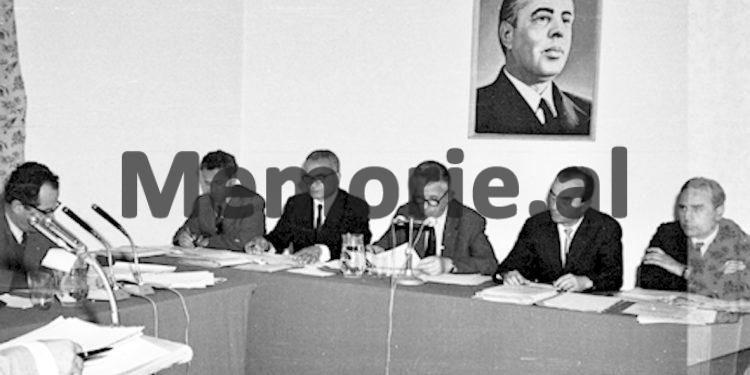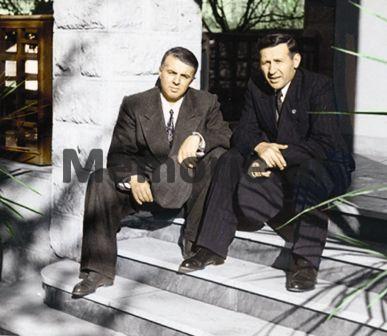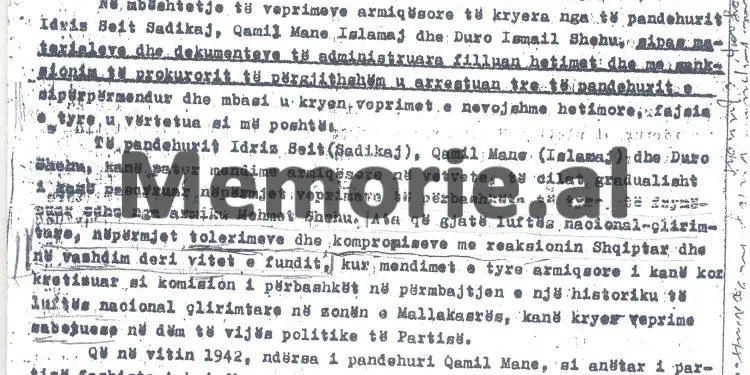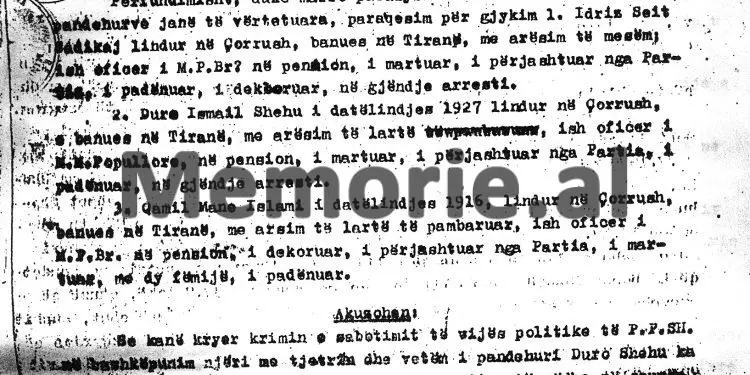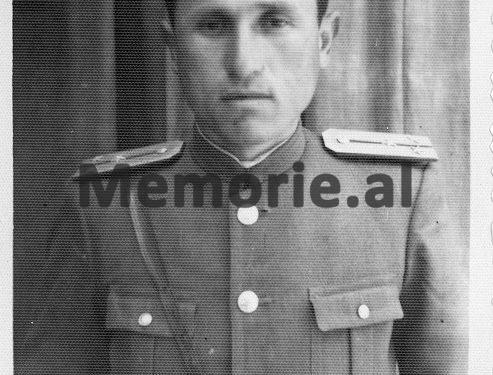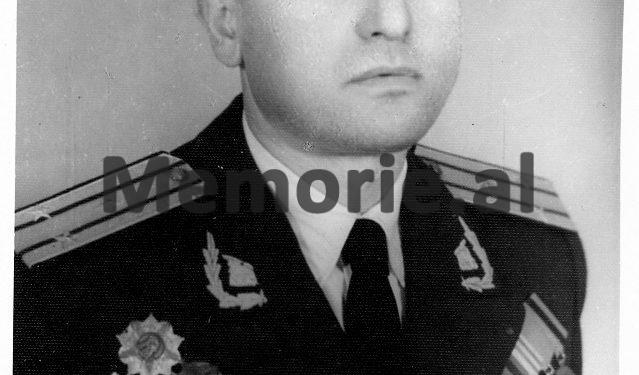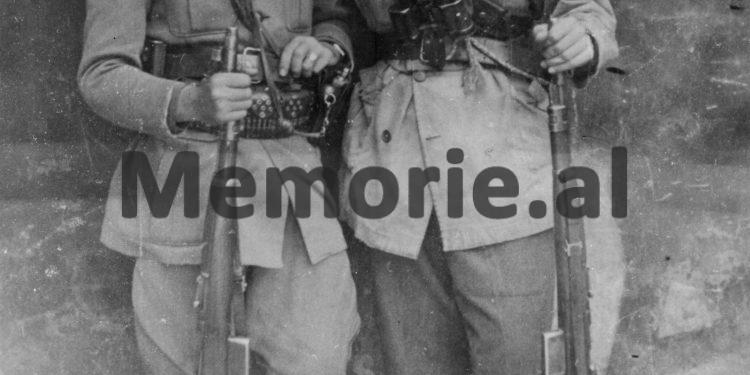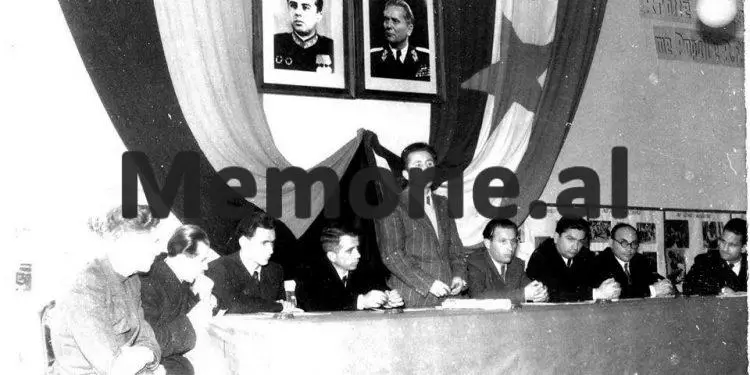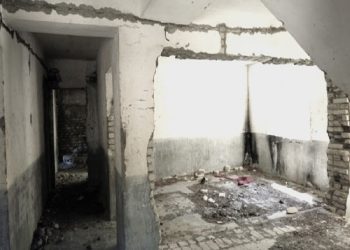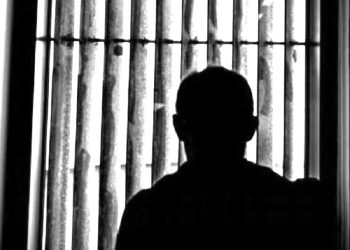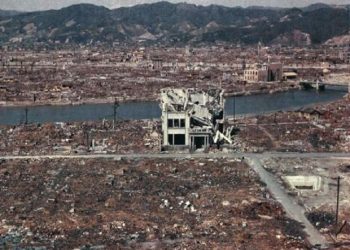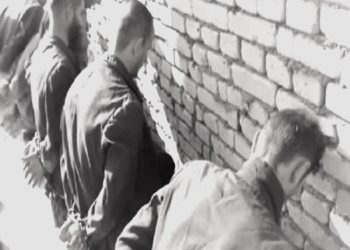Dashnor Kaloçi
Memorie.al publishes an archival document extracted from the Archive of the Ministry of Internal Affairs (System Archive), which belongs to 1983, where the indictment formulated by the General Prosecutor’s Office of the People’s Socialist Republic of Albania is kept, which bears the signature of The Prosecutor General, Rrapi Mino, regarding the charges against the three defendants: Idriz Seit Sadikaj, Qamil Mane Islamaj and Duro Ismail Shehu, who were accused of being the closest collaborators of the former Prime Minister Mehmet Shehu and had kept a sketch program hidden social democrat that “the enemy Mehmet Shehu had formulated since 1942 and using it later as a counter-revolutionary platform to weaken popular power.” Who were Seitaj, Islamaj and Duro Shehu and the accusations leveled against them as “the closest collaborators of the enemy and polyagent Mehmet Shehu since the period of the National Liberation War”, who in cooperation with each other had established the cult and role of enemy Mehmet Shehu during the War in the province of Mallkastra, obscuring the role of the Party ?!
“These sabotaging actions of the orientations and political line of the Party for the development of the National Liberation War, had their source in the hostile thoughts of the enemy Mehmet Shehu and his collaborators Idriz Seiti and Qamil Mane, who were the first to connect with him when he came from abroad and that were activated in joint actions with each other during the War period. In order to carry out his hostile actions during the war and onwards, the enemy Mehmet Shehu reflected his thoughts in a sketch-program, which he submitted to the defendant Idriz Seiti since his first meeting in August 1942. The opinions expressed in this social democratic program-program were concretized through compromises, tolerances, and cooperation with the reaction that during the National Liberation War, actions committed by the enemy Mehmet Shehu with the participation of both defendants Idriz Seiti and Qamil Mane. Defendant Idriz Seiti read and commented on the content of the draft program, preserving it and multiplying it until 1973, when he handed it over to the author, the enemy Mehmet Shehu, who used it as a counter-revolutionary platform to weaken the dictatorship. of the proletariat and the Albanian Labor Party ”.
This is written, among other things, in the indictment filed by the General Prosecutor’s Office of the People’s Socialist Republic of Albania, represented and signed by the General Prosecutor Rrapi Mino, against the three defendants Idriz Seiti (Sadikaj) Qamil Mane (Islamaj) and Duro Ismail Shehu, an indictment dated 13.X.1983 and was recently extracted from the Archive of the Ministry of Interior. But who were Seiti, Islamaj and Shehu, what was their past and what connections did they have with Prime Minister Mehmet Shehu, who was found murdered in the bedroom of his villa, shortly before the three were arrested and to be taken as defendants by the General Prosecutor’s Office? What were the accusations that were formulated at that time by the Investigation for Mehmet Shehu, his brother Duro Shehu, former senior officer of the Albanian Military Aviation and two of the people and closest associates of the Albanian Prime Minister since the time of the War, the military top Idriz Seit Sadikaj and Qamil Mane Islamaj?
All these mysteries are “uncovered” in that indictment formulated by the General Prosecutor’s Office of the Socialist Republic of Albania headed by Rrapi Mino, a document which Memorie.al publishes with abbreviations starting from the number today. As we will see from the document in question, the charges brought by the General Prosecution against the defendants, Seiti, Islamaj and Shehu, as well as the testimonies of other witnesses who testified against them in the investigation, are highly questionable. because they were taken in abnormal conditions, but through physical and psychological violence and the most inhuman tortures done to them during the investigation process. This has been witnessed by the defendants of this process, as well as by some senior investigators and military of the Ministry of Interior and State Security of that time, who were related to the process in question, who, among other things, have expressed coming to the same conclusion: “Those accusations raised by Enver Hoxha against his collaborators, we had to settle them legally, to send them to court.” This is what happened and in this context the whole accusation against the defendants, Seiti, Islamaj and Shehu, was drafted, where it is clear that the main goal of the municipal regime of Enver Hoxha was not just to punish them, but through that process. Enver Hoxha, wanted to hit the Prime Minister Mehmet Shehu himself, whom he had declared an enemy and polyagent, and the accusations against him to become as credible as possible among the people. That “scheme”, Enver Hoxha had used in all cases (since the end of the war) when he started attacking his closest associates, such as: Nako Spiro, Sejfulla Malëshova, Ymer Dishnica, Koci Xoxe, Pandi Kristo , Kristo Themelko, Tuk Jakova, Bedri Spahiu, Liri gega, Dali Ndreu, Liri Belishova, Koço Tashko, Beqir Balluku, Petrit Dume, Hito Çako, Todi Lubonja, Fadil Paçrami, Dashnor Mamaqi, Koço, Abdyl Këlleje, Kiço. All the accusations against them and the various documents, which are published every day on the pages of Memorie.al, as well as the ones we are publishing from today’s issue for three of the closest associates of the former Prime Minister Mehmet Shehu, they are nothing but part of the “mechanism” used and used by Enver Hoxha throughout his period to eliminate his closest collaborators, as the “teacher” and his spiritual father, Josif Visiaranovich Stalin, once did in Soviet Union.
Indictment of the General Prosecutor’s Office
Akt-count
Against the defendants
Idriz Seit Sadikaj
Qamil Mane Islamaj
Duro Ismail Shehu
They are accused: That in cooperation with each other they committed the crime of sabotaging the political line of the Albanian Labor Party and the defendant Duro Shehu committed the criminal offense of smuggling in large proportions in the amount of 11937.50 ALL, provided as offenses criminal from Articles 53 and 13, 72 / II of the Criminal Code.
In support of the hostile actions committed by the defendants Idriz Seit Sadikaj, Qamil Mane Islamaj and Duro Ismail Shehu, according to the materials and documents administered, investigations were initiated and with the sanction of the General Prosecutor, the three above-mentioned defendants were arrested and after the actions of necessary investigation, their guilt was proved as follows:
Defendants Idriz Seit (Sadikaj), Qamil Mane (Islamaj) and Duro Shehu had hostile thoughts in themselves, which they gradually reflected through their joint actions, also inspired by the enemy Mehmet Shehu. Those who during the National Liberation War, through tolerances and compromises with the Albanian reaction and continuing until recent years, when they have concretized their hostile thoughts as a joint commission in the content of a history of the National Liberation War in the area of Mallakastra, have committed sabotage actions to the detriment of the Party political line.
Since 1942, while the defendant Qamil Mane, as a member of the Fascist Party met and received from the Tirana Police Station the enemy Mehmet Shehu, the defendant Idriz Seiti, as a criminal and rapist of the people of the Çorushi area of Mallakastra, with the departure of the enemy Mehmet Shehu in Çorrush was immediately connected with him and together with each other they carried out hostile actions in sabotaging the political line of the Party, regarding the formation of the National Liberation Councils, placing at the head exponents of reaction and fascism in the Mallakastra area.
While on the one hand they put reaction leaders in the National Liberation councils, on the other hand the enemy Mehmet Shehu, through the defendant Qamil Mane, intervened to connect and compromise with the other exponent of the reaction Isa Toska, and during their activity allegedly in favor of the National Liberation War, the enemy Mehmet Shehu did not fight to destroy 8 (eight) Gendarmerie posts in the area of Mallakastra, but they were left vacant and fled “without a check without a bamp” as the defendant Idriz Seiti himself states as member of his squad.
These sabotaging actions of the orientation and political line of the Party for the development of the National Liberation War, had their source in the hostile thoughts of the enemy Mehmet Shehu and his collaborators Idriz Seiti and Qamil Mane, who were the first to connect with him when he came from abroad and that were activated in joint actions with each other during the war period. In order to carry out his hostile actions during the war and onwards, the enemy Mehmet Shehu reflected his thoughts in a sketch-program, which he submitted to the defendant Idriz Seiti since his first meeting in August 1942. .
The opinions expressed in this outline-social democratic program have been concretized through compromises, tolerances, and cooperation with the reaction that during the National Liberation War, actions committed by the enemy Mehmet Shehu with the participation of both defendants Idriz Seiti and Qamil Mane. Defendant Idriz Seiti read and commented on the content of the sketch-program, preserving it and multiplying it until 1973, when he handed it over to the author, the enemy Mehmet Shehu, who used it as a counter-revolutionary platform for weakening the state of the dictatorship of the proletariat and the Albanian Labor Party.
Defendant Idriz Seiti through joint actions and ongoing becoming the bearer, implementer, commander and reflector of the outline program as well as an active member of the commission composed of defendants Qamil Mane and Duro Shehu, who have written the history of The war of the people of Çorrush, by distorting history, have sabotaged the messages and orientations of the Party during the War and onwards.
The hostile position of the defendant Idriz Seiti to the detriment of the political line of the Party, is confirmed in addition to his explanations by plenty of documentary material evidence found, which have been preserved to achieve his counter-revolutionary goals. Defendant Idriz Seiti, in addition to the hostile outline of the enemy Mehmet Shehu, has preserved other hostile documents, the content of which is contrary to the Party line, its orientations and directives.
Thus he preserved a correspondence sent to him by the enemy Tuk Jakova during the National Liberation War, dated 30.03.1944, a document which since that time exposes the opportunistic hostile views of the enemy Tuk Jakova, which he has realized through the defendant Idriz Seiti. In this document he instructs the defendant: “Notify the various wards to suspend the seizures in the homes of the fugitives.”
In addition to the above, the defendant Idriz also maintained correspondence with the enemy Mehmet Shehu, correspondence and messages, which were found in the control of the apartment about 12 months after the declaration by the Party as an enemy of Mehmet Shehu, documents which he kept for to oppose the State and the Party.
Being the closest man of the enemy Mehmet Shehu, his close collaborator since the National Liberation War, the defendant Idriz Seiti, as a member of the commission composed of the defendants Qamil Mane and Duro Shehu, during the compilation of the history of the people’s war of Çorrush with counter-revolutionary and sabotaging intent of the Party line, has distorted history.
These three defendants, denigrating the leading, leading, organizing and inspiring role of the Albanian Communist Party, during the National Liberation War, performed the cult of the individual enemy Mehmet Shehu and dedicated to him the entire role of the War in the Çorrush-Mallakastra area. These defendants, the hostility towards the Party and the State of the dictatorship of the proletariat, has made them so consistent that the historical facts overturn them upside down.
Even the enemies of the Albanian people know that the Albanian Communist Party was founded on November 8, 1941. When as a result of the previous work of the Party the war of the Albanian people against fascism had begun and gained momentum after the establishment of the SNP, where it became the active leader, organizer and inspirer of the people in the struggle for liberation.
And while the war had begun, the Party was leading and fighting, the enemy Mehmet Shehu came in August 1942, when the people’s struggle for liberation from fascism had erupted throughout the country. But the three defendants, in the history compiled by them, ignore the facts with sabotaging hostile intentions of one of the most glorious pages of our people and Party, that of the National Liberation War.
By denying the role of the Party, they hostilely attribute the role of the enemy Mehmet Shehu in the conduct of this war, saying, among other things: with a special title, they write below: “Mehmet Shehu’s return to Çorrush”, where in 5 pages they continue to praise the enemy Mehmet Shehu and his family.
Defendant Idriz Seiti, being more advanced in common hostile views with the other two defendants, expressed and plotted jointly in consultation with each other, compiles an 18-page historical appendix with his initiative to merge it into the basic content of the basic history of this commission, which with literary figures considers the arrival of the enemy Mehmet Shehu from abroad for the fates of the Albanian people, as an “Odyssey”.
Moreover, the opinions expressed about the “Odyssey” of the defendant Idriz Seiti that the enemy Mehmet Shehu, this defendant, together with the other two defendants have preserved even after the suicide of the enemy Mehmet Shehu, a time when the Party and the people considered an enemy. This shows that these enemies did not want to give up their hostile actions, sabotaging the political line of the Party and perpetuating the image of the enemy Mehmet Shehu.
This is best shown by the facts. While the defendant Idriz Seiti kept in his house an archive of hostile wartime documents, including the hostile history compiled by himself and the commission, the defendant Qamil Mane this history with sabotaging content of the history and political line of the Party, handed it over to his sister-in-law for safekeeping with the order that “he would keep it even after his death”. Since 1942, the defendant Qamil Mane Islamaj, being a member of the Fascist Party, had gone and taken from the Tirana Police Station, Mehmet Shehu.
In order to carry out his hostile activity during the war and onwards, the enemy Mehmet Shehu had reflected his thoughts in a draft-program which he had submitted to the defendant Idriz Seiti since his first meeting in August 1942. That outline-program with social-democratic content, the enemy Mehmet Shehu had tried to implement it together with his two close collaborators, Sadikaj and Islamaj, who were constantly propagating it. The two defendants, Islamaj and Sadikaj, were found with an entire archive of hostile documents at their home after their arrest, and Qamil hid them with his sister-in-law, telling him to keep them even after he had died. Idriz Seiti was also found at home with compromising documents about his connections with the enemy Tuk Jakova.
These facts prove that the defendants wanted to sabotage the Party line and perpetuate the enemy Mehmet Shehu. And for all three there is no way the opposite can happen. They were not only related by blood to each other and the enemy Mehmet Shehu, was the epicenter around which their hostile actions were carried out, but also collaborators in actions and thoughts. Defendant Idriz Seiti himself was admitted to the Party in 1942, by enemies Dushan Mugosha and Mehmet Shehu, which is clearly expressed in the content of the history.
Defendant Duro Shehu, the brother of the enemy Mehmet Shehu and an active supporter and inspirer of the hostile thoughts expressed in the content of the history. These facts clearly show the hostile, sabotaging predisposition of these three defendants, in the defense, perpetuation and expulsion of the enemy Mehmet Shehu Party, actions committed by them during the war, before the assassination and after the suicide and declaration as an enemy of Mehmet Shehu.
An analysis of the evidence proving the guilt of the three defendants on the crime of sabotage of the political line of the Albanian Labor Party is referred to as follows:
In his statements dated 18.3., Witness HA says: “In the history of the village of Çorrush the Party line is ignored, the role of the masses decreases during the national liberation war in the Mallakastra area, therefore this history does not serve the education of the masses and generations upcoming. In it, from the beginning to the end, the cult of the chief agent Mehmet Shehu and his family and members of this history stands out. When in the 50-page history, over 10 pages are dedicated to the biography of the enemy Mehmet Shehu, for dozens of martyrs nothing is said about their historical acts, except a list of names placed at the end of the history.
Even in the material written by the defendant Idriz Seiti of 18 pages, the witness H. A. states that “… he is a denigrator of the great work of the Party and the masses, in the National Liberation War under the leadership of the Party”. Writing the defendant Idriz, that the arrival of Mehmet Shehu forever connected the people of Çorrush with the National Liberation Movement, implies that without the enemy Mehmet Shehu, the people of the village of Çorrush would not have joined the Party.
Even on page 13 of the material, the defendant Idriz states that: “At that time, Çorrush’s childhood had no other moral-political support except the Shehaj family and her revolutionary son Mehmet”. The truth is, says this witness, that the people of Çorrush have been and remain a brave and revolutionary people who have supported the National Liberation War, despised and fought the exploitation.
Witness Sh. H. in his trial-testimony dated 19.3.1983, among other things says: “… The history of Çorrush, by the author is written starting from the subjectivist position and without partisanship. It ignored the main events and documents of the Party, of the National Liberation Movement. All this was done to bring to the fore the image of the enemy Mehmet Shehu, his family and members, denigrating the role of the Party.
This history has no educational value for future generations, but instead brings divisions between the Çorushjots and the surrounding villages. Below the witness Sh. H. also gives the relevant arguments. In the history, the defendants wrote: “The first spark for the establishment of the National Liberation Councils in Mallakastër was lit with the establishment of the Çorrush village council by Mehmet Shehu”. This, says the witness, is an insult to both the people of Çorrush and Mallakastra, that the first spark was given by the April call of the Central Committee of the Communist Party of Albania and later in the decisions of the Peza Conference.
The authors of the history ignore the work of the forums and organizations of the Party and it is so conspicuous that they baptize the Committee of the Vlora Regional Party with another name: “Vlora-Mallakastër Regional Committee”. The ten-day period of the activity of the enemy Mehmet Shehu, occupies 43 pages out of 50 pages that the whole history has. Continuing his statements, this witness explains that the unmasking of the goals of the “National Front” in the meeting in Rome is attributed to Mehmet Shehu himself, while in fact the Vlora Regional Committee had taken all measures to unmask the leaders of the National Front in this meeting, etc. etc.
Thus, the defendant Duro Shehu, in his depositions, among other things, explains that Idriz Seiti told him: “Mehmet Shehu told me since he returned from abroad in August 1942, an important document that is a program… I will try to elaborate the content of this program in this part of the history, where we are as members of the commission ”. The defendant Duro Shehu gives his consent, emphasizing the defendant Idriz Seiti, “to do such a thing” (minutes of 2.2.1983).
The defendant Qamil Mane, on 16.11.1982 also testified, among other things, the defendant Idriz Seiti told him: we met together “. So these three defendants, who have preserved and learned about the content of the outline-program of the enemy Mehmet Shehu, which in itself is a counter-revolutionary platform, have merged his views into the content of the history compiled by them.
This is confirmed not only by the history that is administered as material evidence but also by the act of experts, where among other things it is stated that: “the authors do not directly mention the political outline of Mehmet Shehu, but by stopping Duro Shehu large in the amount of crimes these from Articles 53-13 of the Criminal Code.
The indictment was drafted today on 13.10.1983.
Investigators M. L. O. M. B. D.
This indictment was also approved by the Prosecutor of the College of the High Court and the President of this Court, Aranit Çela.
Outline-social political program of Mehmet Shehu, August 1942
Liberation of Albania from foreign yoke, expelling and destroying all fascist forces on Albanian soil.
Establishment of the new Albanian state, the Albanian People’s Republic.
Independent of any imperialist enemy power and a Revolutionary Democratic Constitution and the revolutionary transformation of all economic, social, educational and moral life to open to the Albanian people the safe path of emancipation, real and ever economic and social.
Formation of the Revolutionary People’s Government in which all social strata interested in the implementation of this program should be represented: This government should:
- a) To ensure the full and unmistakable implementation of this program
- b) With its domestic policy to be based on the New Revolutionary Constitution and to ensure the protection of the interests of the people from any of its enemies.
- c) To pursue a foreign policy which should be a policy of peace with all other peoples. A policy independent of any foreign enemy imperialist power and a policy of close and sincere Alliance with the Soviet Union
The immediate establishment of a regular People’s Militia which must be able to provide with its force, the protection of the people from any intentional or counter-revolutionary attempt of the internal and external enemy.
General educational reform, to eradicate and eradicate any trace of fascist culture, by introducing political education into the general educational program, in order to allow the people to emerge from the darkness of illiteracy and to be provided with a progressive revolutionary education. Material assistance from the state for free education of all those who deserve it. State monopoly of all printing houses and radio stations.
Social reform to allow the people to enjoy all Democratic Freedoms: freedom of the press, freedom of democratic parties, freedom of strike, etc. Implementing the right to universal (universal) suffrage, fair and secret, being a voter every Albanian citizen who has reached the age of 19, the emancipation of Albanian women, allowing this to come out of the darkness of prison patriarchal and feudal life and have equal rights with men in every sector of life, private and collective, economic and social.
Immediate release of all political prisoners and internees. General and comprehensive amnesty for all prisoners for municipal guilt. Annulment of the fascist Criminal and Civil Code and review of all cases of prisoners for municipal guilt based on the New Criminal and Civil Code.
Destruction of all remnants and traces of fascism on Albanian soil.
- a) The formation of a new democratic bureaucracy, on the ruins of the fascist bureaucratic system
- b) The general imprisonment of all the enemies of the people. c) Establishment of the revolutionary court of the people to judge and publicly condemn all the enemies of the people.
The suppression of the Albanian fascist Parliament and the meeting of the new Albanian Parliament composed of the representatives of the people elected by equal universal suffrage, direct being the voter every Albanian citizen who has reached the age of 19 years.
Confiscation and nationalization of all movable and immovable property of the foreign enemy on Albanian land. Cancellation of all foreign state debts. Confiscation and nationalization of all movable and immovable property of all internal enemies of the people, who during the Zogist and fascist rule in Albania have helped directly or indirectly to keep the Albanian people under the yoke of fascism.
- Nationalization of all Albanian land, worked and uncultivated, prohibiting the sale and purchase of land. The full implementation of the agrarian reform, in the expropriation of the beys and the great rich of the lands without any reward and with the general and free distribution of most of these lands to the poor peasants. (For those beys and large landowners who would have cooperated with the people for the liberation of the homeland from foreign yoke, the reform would not be fully implemented).
Material assistance from the state for voluntary agricultural collectivization, without exercising any pressure or obligation on the villager (assistance with agricultural tools, breed animals, selected seeds, loans with favorable conditions, tax deductions, etc. Establishment of state model farms, creation of state cooperatives etc.
The supremacy of all private banks and the creation of a state-owned bank, to open loans to the people on very favorable terms.
Taking general economic measures by the state, aiming at respecting the wealth in the hands of a minority of persons, to free the people from the clutches of usury once and for all and to free the people from the clutches of usury. once and for all and to open to the people the true path of economic emancipation and everlasting well-being.
Implementation 8 (eight) hours of work per day.
Respect and guarantee protection by the state of the spiritual feelings of the people: Religion and customs. Religious practice will be considered an exercise of freedom, voluntary, personal, every religious having equal rights and duties with all other Albanian citizens.
State insurance of the country, reclamation, etc.
Providing by the state (Proponents) the protection of the entire life of the workers, the pension, the paid leave, mutilation, recovery from the state, etc.
State care for the mental, physical and moral development of the youth.
Reviewing the problems of minorities by solving this important issue peacefully according to the principle of respect, of the right of peoples to self-assertion./Memorie.al




